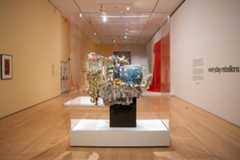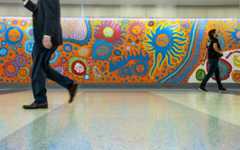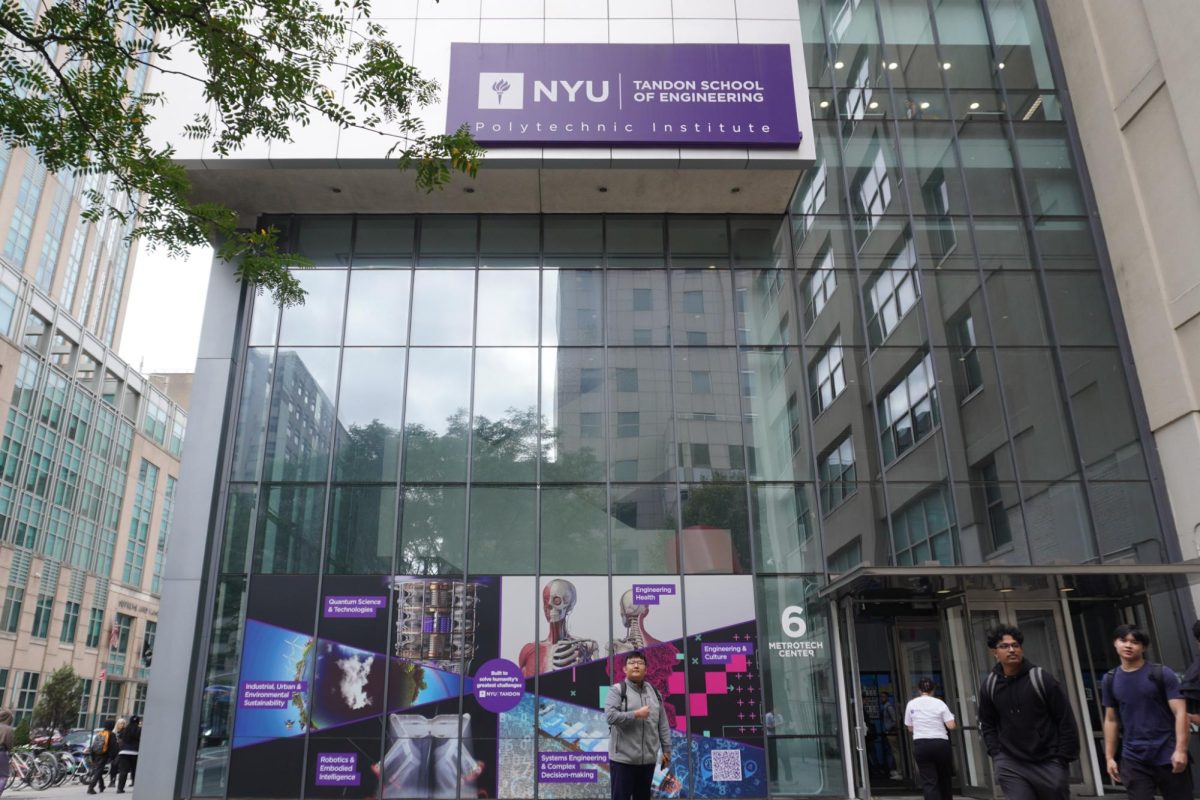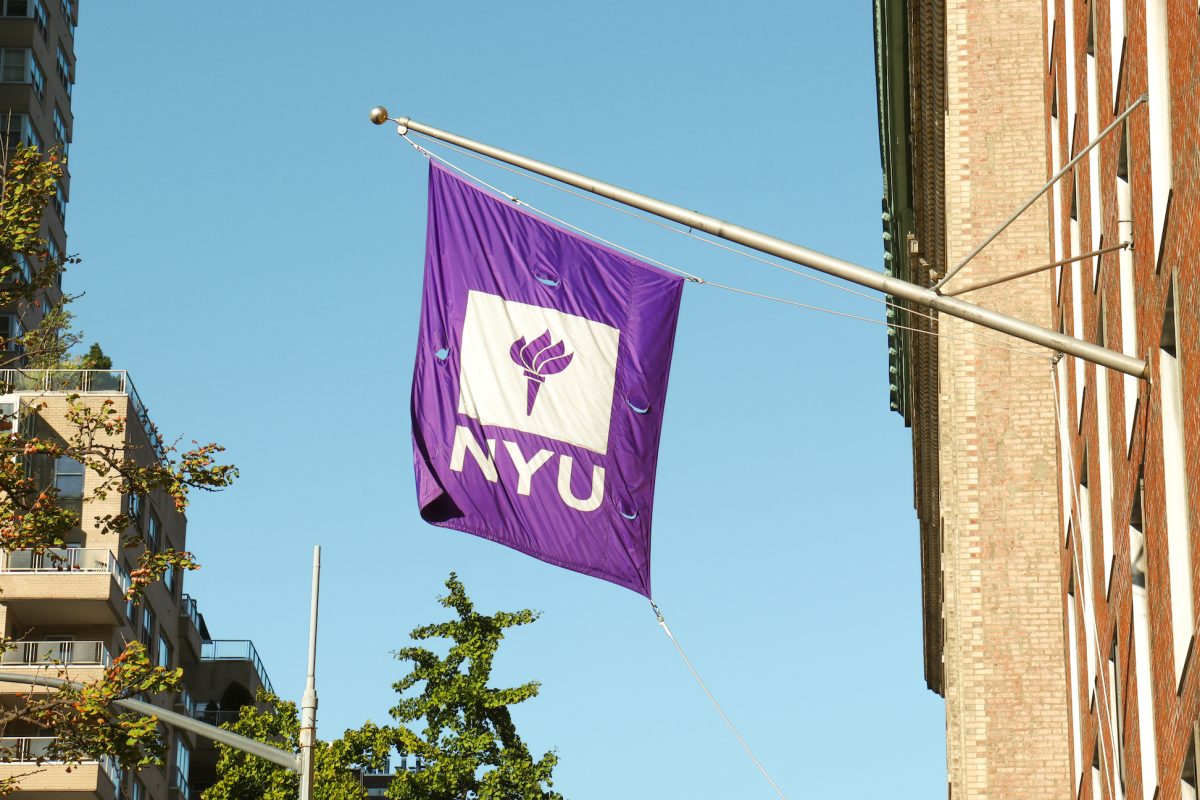‘The New York Sari’ brings a meaningful depiction of the garment to NYC
Centuries of craftsmanship fill the galleries of The New York Historical on the Upper West Side. “The New York Sari,” spanning from the 19th century to the modern day, explores how the traditional woven garment continues to shape South Asian identity in New York City.
Upon entering the exhibit, visitors are greeted with deep burgundy walls, adorned with floral designs reminiscent of the styles and vibrant colors found in saris. A blend of South Asian and American jazz plays in the background while samples of textiles and spices traditionally used in South Asia hang by the entrance, introducing the sari as a cultural and historical significance. Each section is accompanied by context from the saris’ owners and stories of how the garment shapes their cultural identity.
In the center of the entrance stands a large sculptural piece, named “she arose (from a pool of tears,” which showcases the intricate footwork, hand gestures and body movement of Bharatnatyam, a traditional South Indian dance. The piece, made by multidisciplinary artist Suchitra Mattai, is composed of vibrantly colored saris braided together to honor the artist’s heritage and the cultural exchange between everyone who wore them. The work becomes not just a garment, but a connection to culture, and a symbol of resistance and tradition.
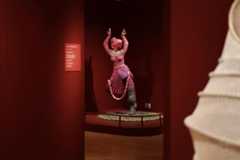
“The story of how the sari became part of the cultural fabric of New York City is also a story of how the city is so much richer because of the different kinds of cultural representations that come into the city,” Anna Danziger Halperin, director of the Center for Women’s History and co-curator of the exhibition, told WSN.
The exhibit traces how South Asian culture entered American life through 19th-century migration and persevered despite challenges ranging fromimmigration quotas to citizenship limitations. One such historical piece is a cotton and linen bedcover hand-painted with kalamkari motifs — once central to British India’s trade and later mass-produced in Europe as chintz, inspiring Western bohemian aesthetics.

In a section dedicated to dance and performance, the sari is highlighted as central to the identity for South Asian dancers who introduced traditional dances to the city and who now play a role in diverse dance forms that blend classical, modern and fusion styles. One displayed sari is a beige pleated garment with golden silk pleats wrapped along the waist, a costume that dancer Jeeno Joseph wore for the Nadanam Collective’s production of “Rachana.”
“Rachana is a weaving of those roots with my lived experience,” Joseph wrote in text accompanying the exhibit. “Dancing alongside dear friends who share parallel journeys makes this offering even more powerful — together, we are shaping our own language of belonging.”
Fashion label SAMAVAI’s patchwork shirt brings gender expression into the conversation. Composed of vintage saris, it differs from the traditional draped dresses worn by women through a repurposing of how the garment is perceived and paying tribute to ancestral pieces. Through challenging traditional methods, the sari emerges as a powerful symbol of gender liberation and self-expression while preserving a shared cultural heritage.
“We really wanted to show gender diversity and that the sari is not just one particular kind of femininity,” Halperin said.
Another section explores the sari’s political significance, featuring a pleated sari adorned with sequins worn by Shahana Hanif, the first South Asian woman elected to the New York City Council. The section shows how the sari extends beyond fashion to serve as evidence of South Asians identity and empowerment.
At the end of the exhibit, visitors are invited to “Show Us Your Sari!” by sending in photos via social media or a QR code. Through this interactive aspect, they can share a bit of their narrative and connection to the sari, which is then displayed on TV screens for all to see. The submitted stories range from treasured family heirlooms to statements of contemporary identity, all honoring the South Asian immigrants who have made their culture an integral part of New York City’s identity.
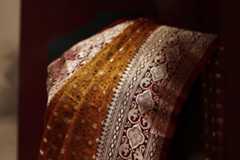
Contact Mariana Arboleda at[email protected].



















































































































